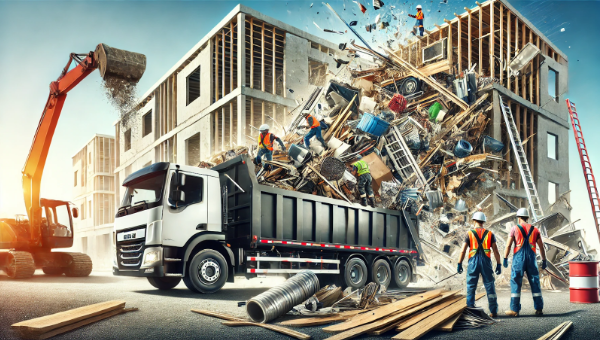
The Complete Guide to Construction Debris Removal: Safe, Efficient, and Eco-Friendly Solutions
Construction projects, whether large or small, come with one inevitable outcome: construction debris. From old drywall and tiles to leftover lumber and concrete, dealing with construction waste can be challenging. However, proper debris removal is essential for keeping your project on track, ensuring safety, and protecting the environment. In this guide, we’ll explore practical and efficient strategies for construction debris removal that will save you time, money, and hassle.
Why Construction Debris Removal is Important
1. Ensures Job Site Safety
Piles of construction waste can create tripping hazards, obstruct pathways, and increase the risk of accidents. Regular debris removal helps maintain a safe job site.
2. Improves Project Efficiency
A clutter-free workspace boosts productivity. Workers can move freely and access tools and materials more easily, which speeds up the construction process.
3. Compliance with Local Regulations
Improper disposal of construction debris can lead to hefty fines and legal complications. Understanding local regulations ensures you avoid penalties and stay compliant.
4. Supports Environmental Sustainability
Recycling and repurposing construction waste reduces landfill usage, conserves resources, and minimizes environmental impact.
Common Types of Construction Debris and How to Dispose of Them
| Type of Debris | Examples | Disposal Method |
|---|---|---|
| Concrete and Asphalt | Old driveways, sidewalks | Recycle as aggregate |
| Lumber and Wood | Framing scraps, pallets | Repurpose or recycle |
| Metals | Steel beams, copper pipes | Scrap metal yards |
| Drywall and Plaster | Old drywall panels, gypsum boards | Specialized recycling facilities |
| Plastics | PVC pipes, plastic sheeting | Curbside or drop-off recycling |
| Hazardous Materials | Paint, adhesives, asbestos | Hazardous waste facilities |
Benefits of Hiring Professional Construction Debris Removal Services
1. Saves Time and Labor Costs
Instead of assigning your team to handle debris removal, hire professionals who can clear the site quickly. This allows your crew to focus on construction tasks, saving time and labor costs.
2. Proper Handling of Hazardous Materials
Items like old paint, adhesives, and asbestos require special disposal. Professional services ensure these materials are handled safely and according to regulations.
3. Eco-Friendly Disposal
Professional junk removal services often prioritize recycling and donating materials, ensuring that as little waste as possible ends up in landfills.
4. Reduces Liability
Handling construction debris yourself can lead to injuries or property damage. Hiring a licensed and insured company minimizes these risks.
FAQs on Construction Debris Removal
Q1: How much does construction debris removal cost?
The cost varies based on the volume of debris, type of materials, and location. On average, expect to pay between $300 and $800 per truckload.
Q2: What types of construction debris can be recycled?
Many materials, including concrete, metal, and wood, can be recycled. However, items like asbestos and treated wood require special handling.
Q3: Do I need a permit to rent a dumpster?
In some areas, you may need a permit if the dumpster will be placed on a public street. Check with your local municipality for requirements.
Q4: What’s the best way to handle hazardous construction waste?
Hazardous materials like paint, solvents, and adhesives should be taken to designated hazardous waste facilities for proper disposal.
